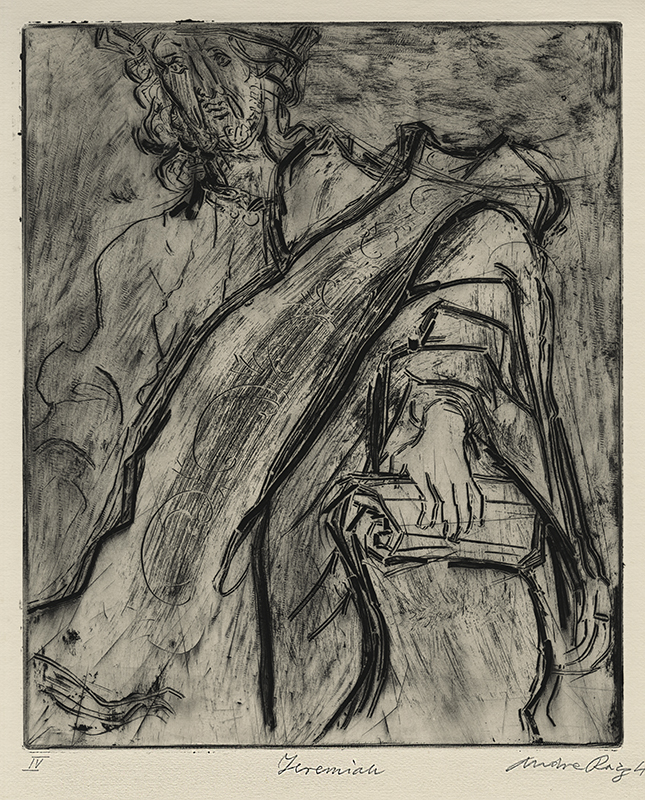
19th, 20th & 21st Century Fine Prints
707-546-7352 · fax 707-546-7924 · web: www.annexgalleries.com · email: artannex@aol.com
Jeremiah - from the "XII Prophets from Aleijadinho" portfolio by Andre Racz

Jeremiah - from the "XII Prophets from Aleijadinho" portfolio
Andre Racz
Jeremiah - from the "XII Prophets from Aleijadinho" portfolio
Andre Racz
1916 - 1994 (biography)From the portfolio of fourteen intaglio prints by Racz, titled "XII Prophets of Aleijadinho", studies of the sculptures of saints by Brazilian artist Antonio Francisco Lisboa.
An air of myth surrounds the executor of these sculptures, pertaining to his very existence. Lisboa, born ca. 1730 and died 1814, had purportedly been a famed decorative stone carver and architect under the tutelage of his father, Manuel Francisco da Costa Lisboa, before he was struck with leprosy at the age of 47. It is said that, despite this debilitating ailment and the loss of most of his extremities, he managed to carve the oversized soapstone figures of the Twelve Prophets with the use of straps and padded ladders. The sculptures were commissioned by Feliciano Mendes, who built the Sanctuary of Bom Jesus de Matosinhos at Congonhas. Lisboa rarely left his home as the leprosy progressed and traveled only at night via covered palanquin; he was soon known as "O Aleijadinho", or "Little Cripple" in Portuguese. Some historians, however, believe that Lisboa never existed, and is in fact a mythical product of author Rodrigo Bretas' 1951 book "Biographical Traces of Antonio Francisco Lisboa", as the author never offers concrete evidence of Lisboa's movements in the time of these sculptures' creation. Yet even in these refutations, there is still no better alternative offered as to who the artist may have been.
The studies for the plates were drawn by Racz in 1946 in Congonhas do Campo in Brazil, and later etched and pulled by him in his studio in New York.
